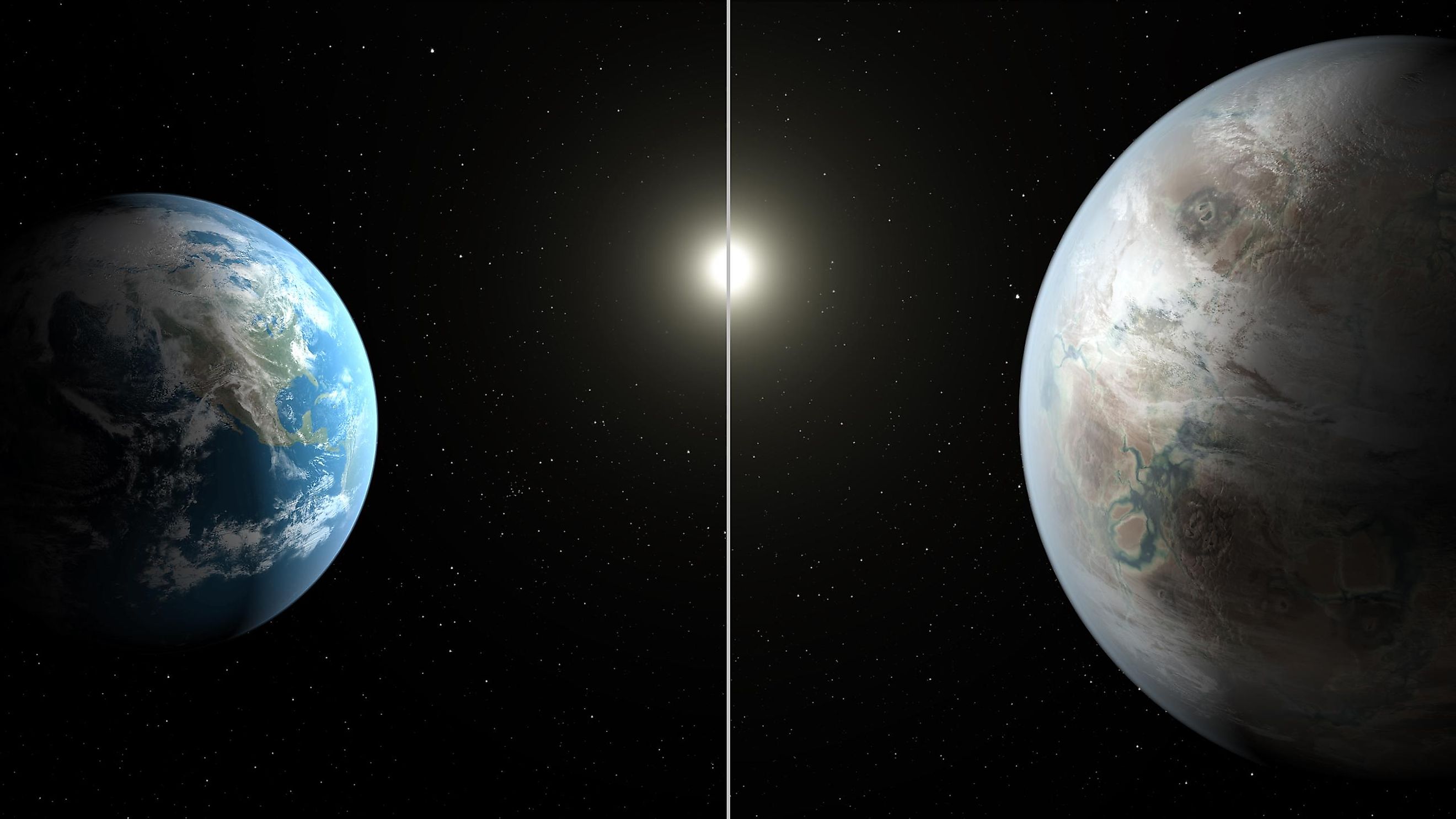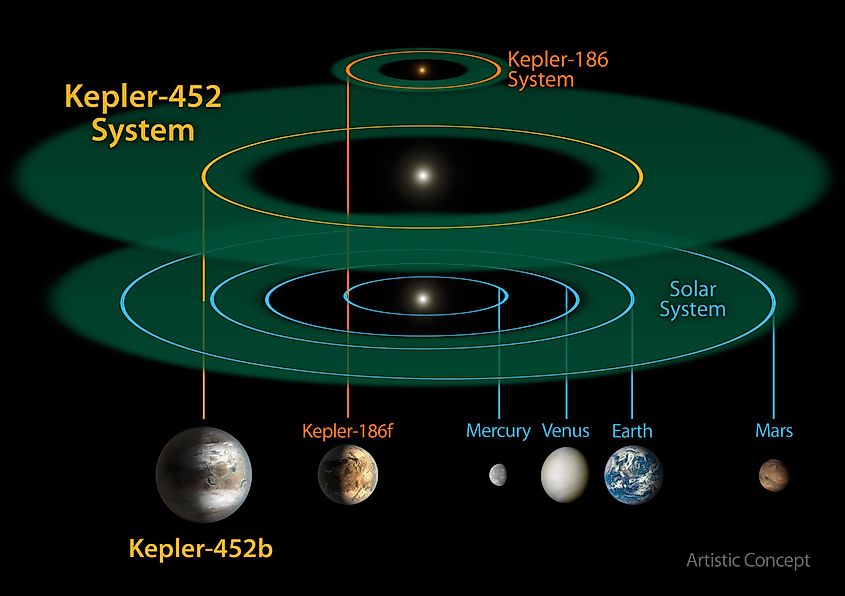
Kepler-452b
Since its launch in 2009, NASA’s Kepler Space Telescope has confirmed the existence of thousands of individual planets orbiting other stars. A small number of these are known as Kepler Objects of Interest (KOI). A KOI is any exoplanet whose mass and location around its star allow for the possibility of habitable, Earth-like conditions. One of the most promising discoveries made by Kepler was the discovery of an exoplanet around the star Kepler 452. In 2015, NASA announced that Kepler had discovered one of the most Earth-like worlds to date. Designated as Kepler 452b, it is located around 1,800 light-years away in the Cygnus constellation.
Characteristics Of Kepler 452b

Kepler 452b was discovered using the transit method. While observing the star Kepler 452, Kepler looked for a change in the star’s brightness caused by a planet passing in front of the star. As a planet passes in front of its star, a little amount of starlight is blocked by the planet. By calculating how much starlight is blocked, scientists can determine whether or not a planet is in orbit around the star. Using the transit method, Kepler confirmed the existence of an exoplanet around the star Kepler 452. Kepler 452b turned out to be one of the most Earth-like worlds discovered. It orbits its star at a distance of 97 million miles (156 million kilometers), compared to Earth’s 95 million miles (150 million kilometers). Kepler 452b orbits its star at nearly the same distance that the Earth orbits the sun. Thus, the time it takes Kepler 452b to complete one orbit is only slightly longer than Earth’s orbital period. Kepler 452b takes 385 days to orbit its star, while the Earth takes 365 days.
In terms of size and mass, Kepler 452b looks very promising. It has a radius that is only 1.5 times larger than Earth’s, and it is estimated to be about five times as massive as Earth. The surface gravity of Kepler 452b is estimated to be roughly twice the surface gravity on Earth. Given its size and mass, Kepler 452b is likely a rocky world.
The host star of Kepler 452b is nearly identical to our sun. Kepler 452 is 3.7% more massive than the sun and 11% larger. It is also older than our sun, having an estimated age of six billion years, or about 1.5 billion years older than the sun. Since Kepler 452b is slightly further from its star than the Earth is to the sun, if you were to stand on the surface of Kepler 452b, its star would look nearly identical to the sun. However, Kepler 452 is slightly warmer than the sun, so Kepler 452b would likely receive more solar radiation than the Earth does. Unfortunately, given the amount of solar radiation that Kepler 452b would receive, it is very likely to be more similar to the planet Venus than it is to Earth. However, this depends on the atmospheric composition of Kepler 452b. Since it is more massive than Earth, Kepler 452b may be able to hold onto any liquid water for long periods. As a star gets older, its temperature increases, and the boundaries for the habitable zone are pushed further away. Kepler 452b currently orbits within its star’s habitable zone, but the habitable zone will likely extend beyond the planet’s orbit in the next one billion years. By the time the sun is six billion years old, the Earth will be orbiting along the inner edge of the habitable zone. Our planet will likely evolve into something like Venus with a runaway greenhouse effect. With Kepler 452b’s higher mass, however, it could hold onto vast amounts of water that would otherwise escape into space. Kepler 452b may be a habitable world, and if it currently isn’t habitable, it may have been in the past.
At a distance of 1,800 light-years, Kepler 452b is too far away for humanity to venture there shortly. If you were to travel at the speed of light, it would take you 1,800 years to arrive at Kepler 452b. If you were to travel at the same speed as the Voyager 2 spacecraft (currently the farthest human-made object), it would take nearly 30 million years to reach Kepler 452b. For now, we will have to rely on Earth-based observations to learn more about Kepler 452b. The Kepler Space Telescope completed its mission in 2018, yet the James Webb Space Telescope (JWST), which launched in 2021, will have the ability to study exoplanets in more detail. In the future, we may just learn whether or not Kepler 452b is indeed habitable.
| Radius | 1.5 Earth radii |
|---|---|
|
Mass |
Five Earth masses |
|
Surface gravity |
Estimated to be twice that of Earth |
|
Length of day |
Unknown |
|
Length of year |
385 Earth days |
|
Discovery date |
Existence confirmed on July 23, 2015 |
|
Discovered by |
NASA’s Kepler Space Telescope |











